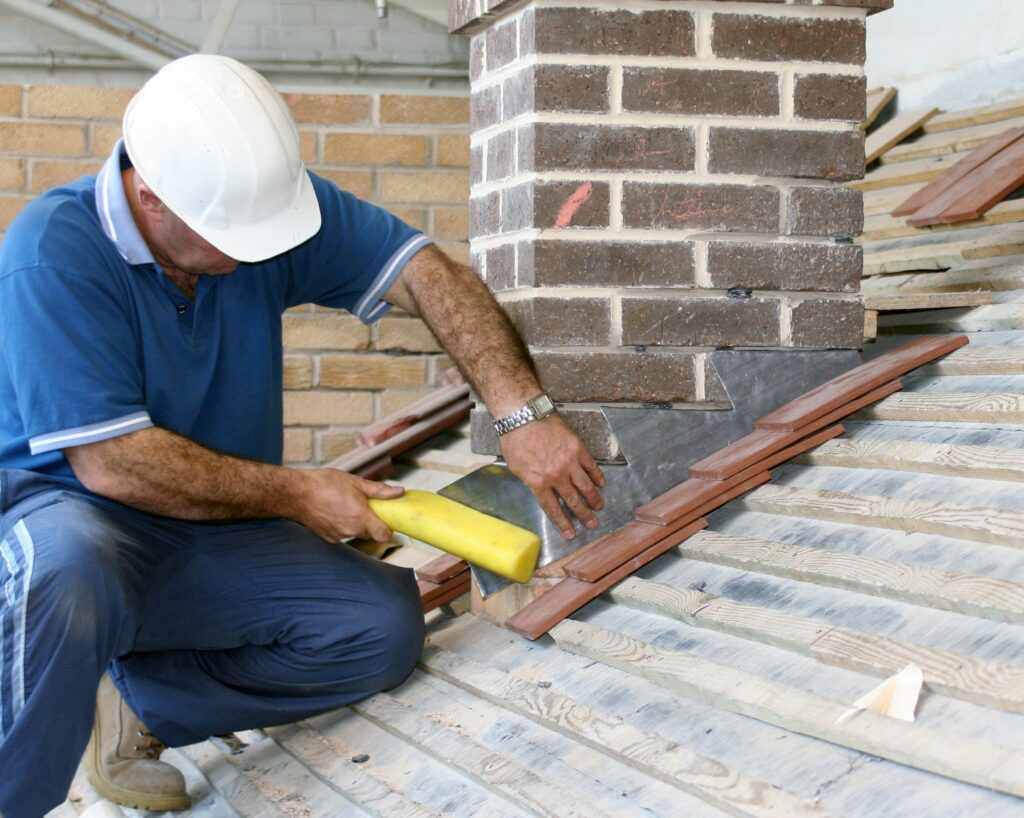Essential for protecting your home from water damage and leaks, flashing plays a vital role in maintaining the integrity of your roof. So let’s explore this often overlooked aspect of roofing—what exactly is flashing, why is it important, and how can you ensure your roof stays watertight and secure?
What Is Roof Flashing?
Flashing on a roof may seem like a mundane detail, but its importance can’t be overstated. Essentially, flashing is a thin piece of metal installed on the intersections and joints of a roof to prevent water seepage and protect against potential leaks. It plays a critical role in directing water away from vulnerable areas such as chimneys, vents, skylights, and walls.
The Purpose of Flashing
Flashing plays a crucial role in preventing water intrusion and ensuring a structure’s longevity. It serves as a protective barrier, directing moisture away from vulnerable areas. Without proper flashing, water can seep into the building envelope, leading to costly repairs and potential structural damage.
Flashing also contributes to energy efficiency by helping maintain a tight seal around openings. It reduces air leakage and heat loss.
Types of Roof Flashing Materials
When it comes to roof flashing materials, there are several options available. Common types include aluminium, galvanised steel, copper, and vinyl. Each material offers its own unique advantages and disadvantages in terms of durability, cost, and appearance.
Aluminium flashing is a popular choice due to its lightweight nature and resistance to corrosion. Galvanised steel flashing is known for its affordability. Copper flashing is highly durable and develops a distinctive patina over time. Vinyl flashing is a budget-friendly option that provides adequate protection against water infiltration.
To select the right type of roof flashing material, carefully consider factors such as climate conditions, building design, and maintenance requirements. You can also consider consulting with a professional roofer to determine the best material for your specific roofing needs.
Common Locations for Flashing on a Roof
Flashing on a roof is commonly found in areas where two different parts of the roof meet, such as around chimneys, skylights, vents, and dormers. These junctions are vulnerable to water infiltration and require flashing to prevent leaks. Flashing is also often installed along the edges of roofs and at the intersections between different slopes.
Signs of Damaged Flashing
- One common sign of damaged flashing is rust or corrosion, which indicates that the metal is deteriorating and may need to be replaced.
- Another indicator is loose or missing flashing, which can allow water to seep into your home.
- Look out for cracks or gaps.
- It’s important to conduct regular inspections and address any issues as soon as possible to prevent further damage.
Importance of Maintaining Flashing
Regular maintenance of flashing can help prevent mould growth and rotting wood that often results from water damage. By inspecting and repairing any damaged or deteriorating flashing promptly, you can extend the lifespan of your roof and avoid more significant issues down the line. Investing in professional inspections and maintenance for your flashing is a proactive way to protect your property investment. It also ensures a sound foundation for years to come.
Ensure Proper Roof Maintenance with AL King Roofing Ltd
When it comes to comprehensive roof repair and replacement services in Melksham and beyond, look no further than AL King Roofing Ltd. We’re committed to delivering first-class roofing solutions tailored to meet your needs.
From minor repairs to complete roof replacements, we’re equipped to tackle any challenge and deliver results.
So, if you’re in need of roofing services in Wiltshire or throughout the South West, don’t hesitate to contact AL King Roofing Ltd. With AL King Roofing, your roof is in safe hands.

